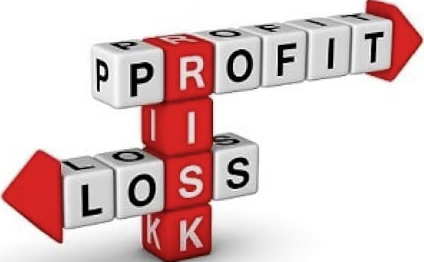Updated April 2020
Odd as it may sound, traders often find it a challenge to take profit.
This is an issue every market speculator likely contends with at some point.
Just as you have a series of rules to enter the market, you must equally have a strategy to exit. A strong psychological element usually exists with both approaches.
When a trade goes sour, most traders have a pre-determined protective stop-loss order in place to exit the market. Although it can be painful to watch the market approach your stop-loss order, it’s imperative the order is not moved to try and circumvent loss. This can, and often does, lead to greater losses.
When a trade is in profit, however, a take-profit order can be implemented.
What Is a Take-Profit Order?
Similar to a protective stop-loss order, a take-profit order is an instruction to liquidate a position upon reaching a designated level. Both orders are an integral part of a trader’s overall risk management plan. Setting a take-profit order provides flexibility. The trader does not have the worry of manually executing the trade (that’s the broker’s job), which also helps negate some of the psychological impact.
In the event price moves favourably in a long position, to close the order you sell the Bid price. Conversely, a short position will have to close, or liquidate, at its ask, or offer, price. However, in times of thin liquidity, a wide bid/ask spread, slippage can occur. Slippage inevitably happens to every trader at some point in their career – it is essentially a different price than expected on an entry or exit from a trade.
Should You Use a Take-Profit Order?
Each trader is different in terms of their interaction with the market.
Most traders believe a take-profit order is an essential risk-management tool.
Setting take-profit orders, as underlined above, enables the trader to leave their screens. More importantly, it helps eliminate the psychological effect. Be that as it may, there are times, particularly when trading an intraday move, traders opt to exit manually.
To decide on whether using a set take-profit order is right for you, answering the following questions might help:
Are you in a position to constantly monitor your trades until completion?
Do you have trouble liquidating a position at your set price level through fear of missing additional gains?
Do you find yourself closing trades too early, fearful of price not reaching your take-profit level or the market taking back profits?
If you’re in a position to monitor your trades but struggle to take profit when required, employing a pre-determined take-profit order could be an option. On the flip side, should you be psychologically equipped and are also able to monitor your trades, exiting trades manually may be a consideration. Ultimately though, it is trader dependent.
Emotions
Taking profit (trade management) is generally more difficult than executing an entry. Poor target location and lack of trading experience are issues that cause traders not to take profits when they should.
Say you’re in a position which currently trades at two times the risk (in other words, if you risk $100, the trade profit stands at $200), unless you’re a disciplined trader with a take-profit strategy in hand, you will likely feel unsettled as greed and fear will be battling for control.
If you find yourself in this spot regularly, creating an exit strategy before you enter is key to help overcoming this. In fact, this should be a pre-requisite for most traders. Failure to do so will result in emotional decisions taking lead of your trading, and this seldom ends well for most traders.
Different Methods
- Set and forget. This does a good job of removing the emotional impact out of taking profits. As the name implies, you set the orders at a designated level and forget the position until it has closed. This is essentially a hands-off approach which involves predetermining trade parameters prior to pulling the trigger.
- Taking partial profits. Some traders find it easier to manage trades when they bank partial profits as the position develops. Typically, after taking some initial profit off the table, you’ll find traders will also look to reduce risk to breakeven. This lessens the psychological impact. It feels good to bank a profit, leaving the trader more relaxed and often more objective with the remainder of the position.
- Trailing the position. This is a common technique and can really add stock to your account if you happen to join a trend at the right time. Traders employ a diverse range of techniques in order to ensure they trail the market’s movement as efficiently as possible. This includes using exponential moving averages (EMAs), Fibonacci levels, support and resistances and trendlines. Ultimately it depends on what the trader is comfortable with.






